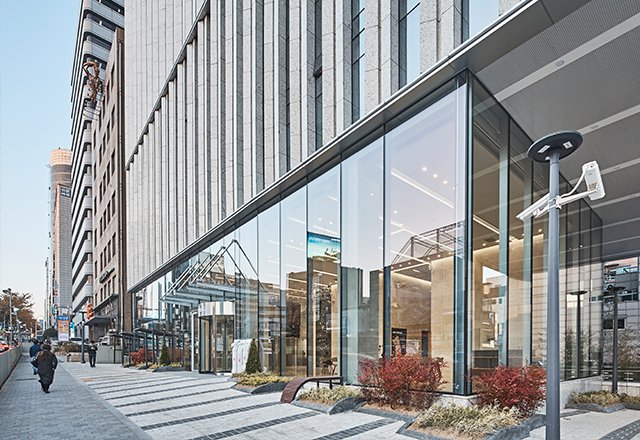Implantable Collamer Lens (ICL) surgery has become a popular choice for international patients traveling to South Korea, thanks to its advanced medical technology, competitive pricing, and high-quality outcomes. But while the surgery itself is quick and minimally invasive, proper aftercare is essential to protect your vision — especially when you’re heading back home shortly after the procedure.
So, how do medical tourists ensure a smooth recovery and proper follow-up care after ICL surgery in Korea?
This guide explains everything you need to know about ICL aftercare for international patients, including what to expect, how clinics in Korea support you post-surgery, and tips for managing follow-ups from abroad.
👁️ Why ICL Aftercare Is Crucial — Especially for International Patients
Unlike LASIK or PRK, ICL involves inserting a lens inside your eye — meaning it’s a permanent implant. While the recovery process is generally smooth, proper follow-up is critical to:
- Monitor eye pressure and healing
- Ensure the lens is properly positioned
- Detect early signs of complications like inflammation or halos
- Maintain optimal vision correction long-term
For international patients, aftercare planning ensures that you don’t face problems once you’re back home without support.
📅 What ICL Aftercare Looks Like in Korea
Most top-tier Korean ICL clinics offer a structured post-op care plan tailored for foreign patients. Here’s what you can expect:
✅ 1. Immediate Post-Op Care (Day 1 – Day 3)
- Eye drops for antibiotic and anti-inflammatory purposes
- Protective eye shields or goggles for sleeping
- Avoiding touching/rubbing your eyes
- Clinic check-up within 24 hours of surgery
✅ 2. Short-Term Follow-Up (Within 1 Week)
- A follow-up consultation 3–5 days after surgery
- Measurement of intraocular pressure (IOP) and lens placement
- Prescription update (if needed) and travel clearance
✅ 3. Remote Follow-Up Support (Post-Departure)
- Video consultations with your surgeon or care team
- Email or phone check-ins to monitor your healing
- Ongoing prescription eye drops instructions for up to 1 month
- Guidance on finding a local optometrist or ophthalmologist for long-term care
✈️ How Korean Clinics Support Aftercare for Tourists
Recognizing the unique needs of international patients, many Korean eye clinics offer comprehensive medical tourism packages that include:
💬 Multilingual Patient Coordinators
- Available during your stay and after your return home
- Fluent in English, Chinese, Russian, Japanese, and other languages
- Act as your point of contact for follow-ups and concerns
🖥️ Telemedicine Services
- Online video follow-ups via Zoom or clinic apps
- Secure photo or video upload of your eyes for remote assessment
- Access to surgeons even after you leave Korea
📄 Aftercare Documentation
- Detailed post-operative care instructions in your language
- Emergency contact numbers for urgent questions
- Guidance on which symptoms are normal vs. concerning
🌍 How to Manage ICL Follow-Up from Your Home Country
While Korean clinics provide strong support remotely, you should also prepare for local follow-up care once you’re home. Here’s how:
🔍 1. Find a Local Eye Doctor in Advance
- Choose a licensed optometrist or ophthalmologist familiar with ICL
- Schedule a check-up within 1–2 months post-surgery
- Share your Korean medical records with them
Tip: Ask your Korean clinic to write a referral letter for your local eye doctor, including surgical details and aftercare guidelines.
🗓️ 2. Keep a Follow-Up Schedule
- Week 1: Korean clinic follow-up
- Week 4: Local eye check-up
- 3 Months: Final visual acuity assessment
- 6–12 Months: Annual monitoring begins
📲 3. Stay in Touch with the Korean Clinic
- Use messaging apps like KakaoTalk, WhatsApp, or email
- Ask for follow-up consultations if you notice changes in vision
- Send regular updates, especially if complications arise
🚩 Watch Out for These Post-ICL Symptoms
Most patients recover quickly, but keep an eye out for:
| Symptom | Action |
|---|---|
| Redness or persistent irritation | Use prescribed drops, contact your clinic |
| Sudden vision loss or light sensitivity | Seek immediate medical help |
| Pain or eye pressure sensation | May indicate high intraocular pressure |
| Halos or glare at night | Common at first, but should improve over weeks |
Always report symptoms to both your Korean clinic and local doctor.
🧳 Travel Tips for After ICL Surgery
If you plan to travel soon after surgery, follow these tips:
✅ Do:
- Wear sunglasses to protect from UV rays
- Use lubricating drops during flights
- Keep medications and instructions in your carry-on
- Stay hydrated during travel
❌ Avoid:
- Swimming, saunas, or hot tubs for at least 2 weeks
- Heavy exercise or bending over excessively
- Rubbing your eyes or applying makeup too soon
- Long flights within 24–48 hours post-op without clearance
📋 ICL Aftercare Checklist for Tourists
| Task | Completed? |
|---|---|
| Post-op exam at Korean clinic (within 24 hrs) | ✅ / ⬜ |
| Received multilingual aftercare guide | ✅ / ⬜ |
| Booked follow-up with local optometrist | ✅ / ⬜ |
| Downloaded telemedicine app from clinic | ✅ / ⬜ |
| Scheduled 1-month online check-in | ✅ / ⬜ |
| Packed eye drops, sunglasses, instructions | ✅ / ⬜ |
💡 Final Thoughts
ICL surgery in Korea offers safe, high-quality vision correction with fast recovery — and with the right aftercare, international patients can enjoy peace of mind even after returning home. By choosing a clinic that offers structured follow-up plans, multilingual support, and telemedicine, you’ll ensure your investment in better vision lasts for years to come.




